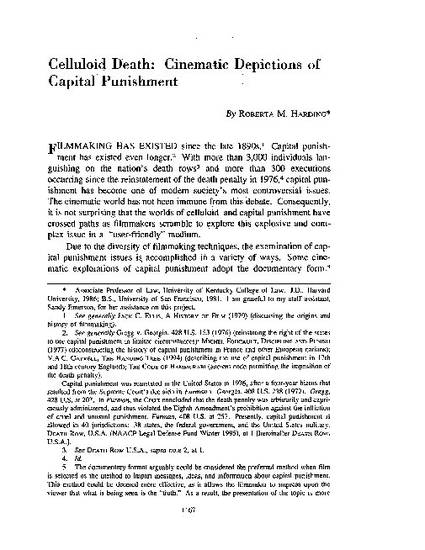
This essay will examine how two filmmakers used the cinema to investigate death penalty issues through the films Dead Man Walking and Last Light. These films were selected because of their similarities: capital punishment is the central theme of both films; the presence of a strong principal character who is the condemned inmate; the utilization of a character who undergoes a spiritual transformation due to interaction with the condemned inmate; the decision to have this character facilitate the humanization of the condemned individual; and the additional role this character plays as the audiences' conscience. There are, however, differences in the manner the two films address capital punishment that will also be discussed. The ultimate goal of this essay is to demonstrate how film is used to investigate a specific legal issue, capital punishment, by identifying, discussing, and comparing the structure of each film, and finally the message each film conveys about the controversial topic of capital punishment.
Available at: http://works.bepress.com/roberta_harding/16/

Robert M. Harding, Celluloid Death: Cinematic Depictions of Capital Punishment, 30 U.S.F. L. Rev. 1167 (1996).